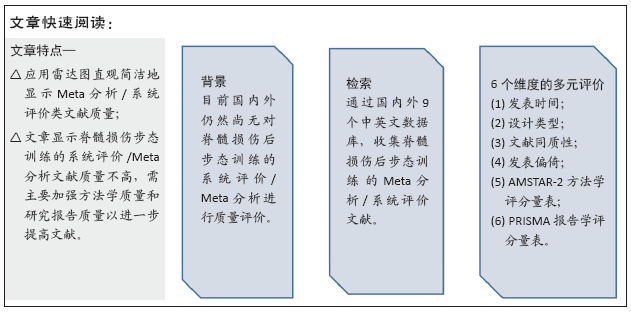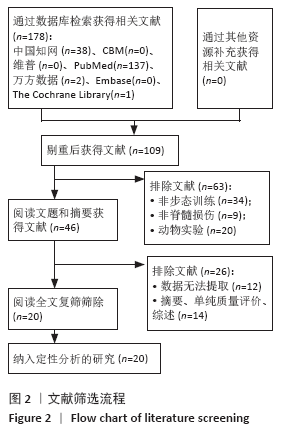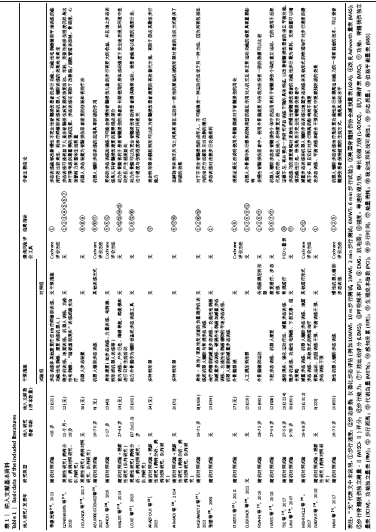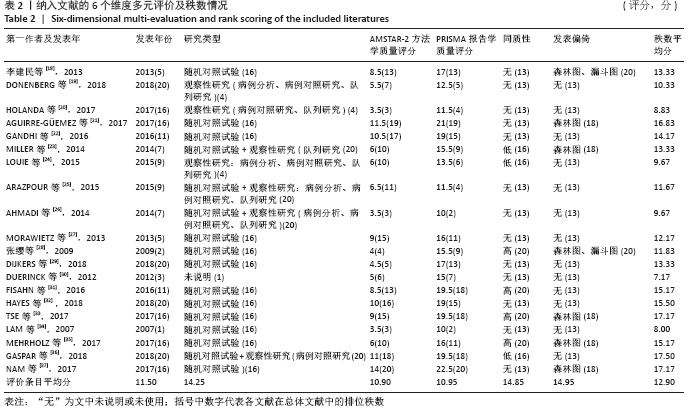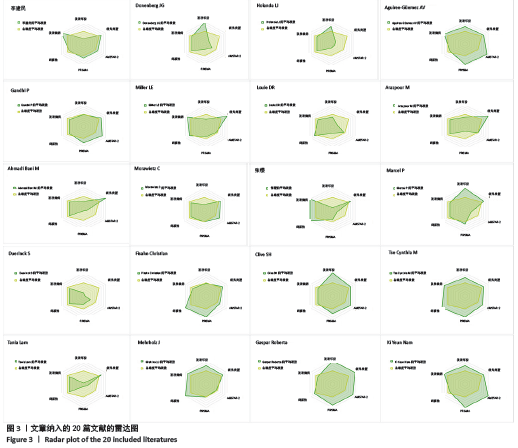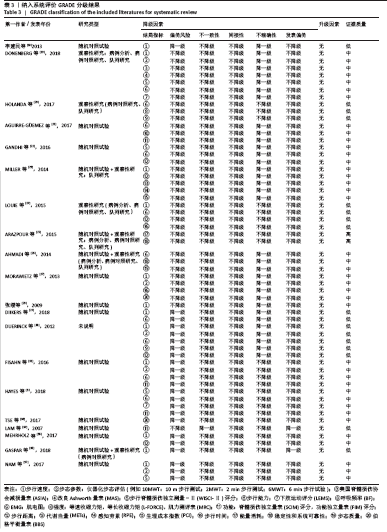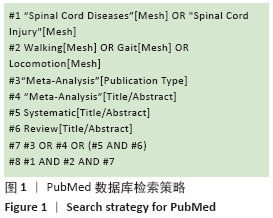[1] 曾红,周谋望.脊髓损伤生物标记物的研究进展[J].中国康复医学杂志,2018, 33(10):1226-1230.
[2] WYNDAELE M, WYNDAELE JJ. Incidence, prevalence and epidemiolo-gy of spinal cord injury: what learns a worldwide literature survey. Spinal Cord. 2006;44(9):523-529.
[3] QIU J. China spinal cord injury network: changes from within. Lancet Neurol. 2009; 8(7):606-607.
[4] CHISHOLM AE, QAISER T, WILLIAMS AMM, et al. Acquisition of a precision walking skill and the impact of proprioceptive deficits in people with motor-incomplete spinal cord injury. J Neurophysiol. 2019; 121(3): 1078-1084.
[5] ANGELI CA, BOAKYE M, MORTON RA, et al. Recovery of over-ground walking after chronic motor complete spinal cord injury. N Engl J Med. 2018;379(13):1244-1250.
[6] 康海琼,周红俊,刘根林,等.脊髓损伤神经学分类国际标准检查表2019版最新修订及解读[J].中国康复理论与实践, 2019,25(8):983-985.
[7] 王寒明,王欢,郄淑燕,等.早期综合康复疗法对脊髓损伤患者的康复效果[J].中国临床研究,2019,32(1):89-92.
[8] YILDIRIM MA, ÖNEŞ K, GÖKŞENOĞLU G. Early term effects of robotic assisted gait training on ambulation and functional capacity in patients with spinal cord injury. Turk J Med Sci. 2019;49(3):838-843.
[9] FIELD-FOTE EC, LINDLEY SD, SHERMAN AL. Locomotor training approaches for individuals with spinal cord injury: a preliminary report of walking-related outcomes. J Neurol Phys Ther. 2005;29(3):127-137.
[10] NEVILLE BT, MURRAY D, ROSEN KB, et al. Effects of performance-based training on gait and balance in individuals with incomplete spinal cord injury. Arch Phys Med Rehabil. 2019;100(10):1888-1893.
[11] 郭素梅,李建民,吴庆文,等.步态训练机器人对不完全性脊髓损伤患者步态的影响[J].中国康复理论与实践,2013,19(7):676-679.
[12] ILHA J, MEIRELES A, DE FREITAS GR, et al. Overground gait training promotes functional recovery and cortical neuroplasticity in an incomplete spinal cord injury model. Life Sci. 2019;232:116627.
[13] 董悦颖.meta分析方法学质量与报告质量评价的主要问题[J].中国卫生统计, 2017,34(6):1006-1008.
[14] MOHER D, LIBERATI A, TETZLAFF J,等.The PRISMA Group.系统综述和荟萃分析优先报告的条目:PRISMA声明[J].中西医结合学报,2009,7(9):889-896.
[15] 张方圆,沈傲梅,曾宪涛,等.系统评价方法学质量评价工具AMSTAR 2解读[J]. 中国循证心血管医学杂志,2018,10(1):14-18.
[16] PANESAR SS, RAO C, VECHT JA, et al. Development of the Veritas plot and its application in cardiac surgery: an evidence-synthesis graphic tool for the clinician to assess multiple meta-analyses reporting on a common outcome. Can J Surg. 2009; 52(5):E137-E145.
[17] 王晓彤,林海雄,陈贵珍.基于雷达图多元评价针灸治疗中风后抑郁系统评价/Meta分析文献质量[J].中国中医基础医学杂志,2018,24(4):518-522.
[18] 李建民,郝正玮,赵雅宁.不同步态训练方法对慢性不完全性脊髓损伤患者步行功能效果的Meta分析[J].中国康复理论与实践,2013,19(2):183-188.
[19] DONENBERG JG, FETTERS L, JOHNSON R. The effects of locomotor training in children with spinal cord injury: a systematic review. Dev Neurorehabil. 2019;22(4):272-287.
[20] HOLANDA LJ, SILVA PMM, AMORIM TC, et al. Robotic assisted gait as a tool for rehabilitation of individuals with spinal cord injury: a systematic review. J Neuroeng Rehabil. 2017;14(1):126.
[21] AGUIRRE-GÜEMEZ AV, PÉREZ-SANPABLO AI, QUINZAÑOS-FRESNEDO J, et al. Walking speed is not the best outcome to evaluate the effect of robotic assisted gait training in people with motor incomplete Spinal Cord Injury: a Systematic Review with meta-analysis. J Spinal Cord Med. 2019;42(2): 142-154.
[22] GANDHI P, CHAN K, VERRIER MC, et al. Training to improve walking after pediatric spinal cord injury: a systematic review of parameters and walking outcomes. J Neurotrauma. 2017;34(9):1713-1725.
[23] MILLER LE, ZIMMERMANN AK, HERBERT WG. Clinical effectiveness and safety of powered exoskeleton-assisted walking in patients with spinal cord injury: systematic review with meta-analysis. Med Devices (Auckl). 2016;9:455-466.
[24] LOUIE DR, ENG JJ, LAM T, et al. Gait speed using powered robotic exoskeletons after spinal cord injury: a systematic review and correlational study. J Neuroeng Rehabil. 2015;12:82.
[25] ARAZPOUR M, SAMADIAN M, BAHRAMIZADEH M, et al. The efficiency of orthotic interventions on energy consumption in paraplegic patients: a literature review. Spinal Cord. 2015;53(3):168-175.
[26] AHMADI BANI M, ARAZPOUR M, FARAHMAND F, et al. The efficiency of mechanical orthoses in affecting parameters associated with daily living in spinal cord injury patients: a literature review. Disabil Rehabil Assist Technol. 2015;10(3):183-190.
[27] MORAWIETZ C, MOFFAT F. Effects of locomotor training after incomplete spinal cord injury: a systematic review. Arch Phys Med Rehabil. 2013;94(11):2297-2308.
[28] 张缨,纪树荣,彭晓霞,等.慢性脊髓损伤患者步行训练有效性的Meta分析[J].中国康复医学杂志,2009,24(2):153-157.
[29] DIJKERS MP, AKERS KG, DIEFFENBACH S, et al. Systematic reviews of clinical benefits of exoskeleton use for gait and mobility in neurologic disorders: a tertiary study. Arch Phys Med Rehabil. 2019. Doi: 10.1016/j.apmr.2019.01.025.
[30] DUERINCK S, SWINNEN E, BEYL P, et al. The added value of an actuated ankle-foot orthosis to restore normal gait function in patients with spinal cord injury: a systematic review. J Rehabil Med. 2012;44(4):299-309.
[31] FISAHN C, AACH M, JANSEN O, et al. The effectiveness and safety of exoskeletons as assistive and rehabilitation devices in the treatment of neurologic gait disorders in patients with spinal cord injury: a systematic review. Global Spine J. 2016;6(8):822-841.
[32] HAYES SC, JAMES WILCOX CR, FORBES WHITE HS, et al. The effects of robot assisted gait training on temporal-spatial characteristics of people with spinal cord injuries: a systematic review. J Spinal Cord Med. 2018;41(5):529-543.
[33] Tse CM, Chisholm AE, Lam T, et al. A systematic review of the effectiveness of task-specific rehabilitation interventions for improving independent sitting and standing function in spinal cord injury. J Spinal Cord Med. 2018;41(3):254-266.
[34] LAM T, ENG JJ, WOLFE DL, et al. A systematic review of the efficacy of gait rehabilitation strategies for spinal cord injury. Top Spinal Cord Inj Rehabil. 2007;13(1):32-57.
[35] MEHRHOLZ J, HARVEY LA, THOMAS S, et al. Is body-weight-supported treadmill training or robotic-assisted gait training superior to overground gait training and other forms of physiotherapy in people with spinal cord injury? A systematic review. Spinal cord. 2017;55(8):722-729.
[36] GASPAR R, PADULA N, FREITAS TB, et al. Physical exercise for individuals with spinal cord injury: systematic review based on the international classification of functioning, disability, and health. J Sport Rehabil. 2019; 28(5):505-516.
[37] NAM KY, KIM HJ, KWON BS, et al. Robot-assisted gait training (Lokomat) improves walking function and activity in people with spinal cord injury: a systematic review. J Neuroeng Rehabil. 2017;14(1):24.
[38] KARSY M, HAWRYLUK G. Modern medical management of spinal cord injury. Curr Neurol Neurosci Rep. 2019;19(9):65.
[39] 张缨,纪树荣,彭晓霞,等.Meta分析慢性脊髓损伤患者步行训练的有效性[C].中国康复研究中心.第三届北京国际康复论坛论文集.中国康复研究中心:《中国康复理论与实践》编辑部,2008: 196-197.
[40] 黄俊杰,王坤善,侯铁东.吸气肌训练联合rTMS改善脊髓损伤患者肌肉和步行功能的效果观察[J].中国医学创新,2019, 16(33):19-24.
[41] 吴金玲,杜宁,石秀秀,等.截瘫步行器Walkabout与ARGO对脊髓损伤患者平衡及日常生活能力的干预效果[J].临床与病理杂志,2019,39(11):2496-2500.
[42] 高正超,牛斌斌,顾梦超,等.高频重复经颅磁刺激治疗不完全性脊髓损伤后运动障碍疗效的Meta分析[J].中国骨伤, 2018,31(1):47-55.
[43] DIJKERS MP, AKERS KG, GALEN SS, et al. Letter to the editor regarding “Clinical effectiveness and safety of powered exoskeleton-assisted walking in patients with spinal cord injury:systematic review with meta-analysis”. Med Devices (Auckl). 2016,9:419-421.
[44] CAO G. Letter to the Editor: “Is body-weight-supported treadmill training or robotic-assisted gait training superior to overground gait training and other forms of physiotherapy in people with spinal cord injury? A systematic review”. Spinal Cord. 2019;57(5):434.
[45] MA DN, ZHANG XQ, YING J, et al. Efficacy and safety of 9 nonoperative regimens for the treatment of spinal cord injury: A network meta-analysis. Medicine (Baltimore). 2017;96(47):e8679.
[46] MEHRHOLZ J, HARVEY LA, THOMAS S, et al. Response to Letter to the Editor by Dr Cao regarding paper titled - “Is body-weight-supported treadmill training or robotic-assisted gait training superior to overground gait training and other forms of physiotherapy in people with spinal cord injury? A systematic review”. Spinal Cord. 2019;57(5):435-436.
[47] HWANG S, KIM HR, HAN ZA, et al. Improved gait speed after robot-assisted gait training in patients with motor incomplete spinal cord injury: a preliminary study. Ann Rehabil Med. 2017;41(1):34-41.
[48] BARBEAU H, BASSO M, BEHRMAN A, et al. Treadmill training after spinal cord injury: good but not better. Neurology. 2016; 67(10):1900-1902.
[49] WERNIG A. Treadmill training after spinal cord injury: good but not better. Neurology. 2006;67(10):1901-1902.
[50] HARKEMA SJ, SCHMIDT-READ M, LORENZ D, et al. The authors respond: balance and ambulation improvements in individuals with chronic incomplete spinal cord injury using locomotor training-based rehabilitation. Arch Phys Med Rehabil. 2012; 93(5):919-921.
[51] DIETZ V. Locomotor recovery after spinal cord injury. Trends Neurosci. 1997;20(8): 346-347.
[52] SPIESS M, SCHULD C. Comment on “Restoration of walking function in an individual with chronic complete (AISA) spinal cord injury”. J Rehabil Med. 2011; 43(4):367-368.
[53] VAN HEDEL HJ. Weight-supported treadmill versus over-ground training after spinal cord injury: from a physical therapist’s point of view. Phys Ther. 2006;86(10):1444-1447.
[54] ROSSIGNOL IS, BARBEAU H. New approaches to locomotor rehabilitation in spinal cord injury. Ann Neurol. 1995;37(5):555-556.
[55] CHAVAKULA V, VASUDEVA V, CHI J. Epidural spinal cord stimulation for the restoration of balance and gait following spinal cord injury. J Rehabil Med. 2016;78(6):N19-N20.
[56] SUNNERHAGEN KS. Commentary on gait training in patients with spinal cord injury. J Rehabil Med. 2010;42(6):527.
[57] SHIN JC, KIM JY, PARK HK, et al. Effect of robotic-assisted gait training in patients with incomplete spinal cord injury. Ann Rehabil Med. 2014;38(6):719-725.
[58] SRIVASTAV AK, SHARMA N, KHADAYAT S. Commentary on: “Combined transcranial direct current stimulation and breathing-controlled electrical stimulation for the management of neuropathic pain after spinal cord injury”. J Rehabil Med. 2019; 51(8):622-623.
[59] MEHRHOLZ J, HARVEY LA, THOMAS S, et al. Author Correction: is body-weight supported treadmill training or robotic-assisted gait training superior to overground gait trainingand other forms of physiotherapy in people with spinal cord injury? A systematic reviw. Spinal Cord. 2018;56(4):412.
[60] CHRISTENSEN C, FICKES L. Commentary on “Interventions for Gait Training in Children With Spinal Cord Impairments: a Scoping Review”. Pediatr Phys Ther. 2017;29(4):349.
[61] FUNDERBURG SE, JOSEPHSON HE, PRICE AA, et al. Interventions for gait training in children with spinal cord impairments: a scoping review. Pediatr Phys Ther. 2017; 29(4):342-349.
[62] QUEL DE OLIVEIRA C, REFSHAUGE K, MIDDLETON J, et al. Effects of activity-based therapy interventions on mobility, independence, and quality of life for people with spinal cord injuries: a systematic review and meta-analysis. J Neurotrauma. 2017;34(9):1726-1743.
[63] Warner FM, Cragg JJ, Jutzeler CR, et al. Progression of neuropathic pain after acute spinal cord injury: a meta-analysis and framework for clinical trials. J Neurotrauma. 2019;36(9):1461-1468.
[64] GUYATT DH, OXMAN AD, VIST GE等.GRADE:证据质量和推荐强度分级的共识[J].中国循证医学杂志,2009,9(1):8-11.
[65] 盛峰.康复治疗不同程度脊髓损伤的临床疗效分析[J].中国卫生标准管理,2018, 9(21):48-50.
[66] 张郑.浅析康复治疗对脊髓损伤患者功能恢复的临床效果[J].中国卫生标准管理,2017,8(3):44-45.
[67] 黄友,彭博.中医康复治疗脊髓损伤的临床研究进展[J].湖南中医杂志,2017, 33(8):204-207.
[68] 何志良,张继荣.脊髓损伤后步行功能障碍的康复现状[J].中国康复,2016,31(6): 476-479.
[69] 林海丹,张韬,陈青.康复机器人辅助步行训练对不完全性脊髓损伤患者步行能力的影响[J].自动化学报,2016,42(12): 1832-1838.
[70] CHEUNG EYY, YU KKK, KWAN RLC, et al. Effect of EMG-biofeedback robotic-assisted body weight supported treadmill training on walking ability and cardiopulmonary function on people with subacute spinal cord injuries - a randomized controlled trial. BMC Neurol. 2019;19(1):140.
[71] RICHARDSON J, TANG A, GUYATT G, et al. FIT for FUNCTION: study protocol for a randomized controlled trial. Trials. 2018; 19(1):39.
[72] FOROUTAN F, GUYATT G, ALBA AC, et al. Meta-analysis: mistake or milestone in medicine? Heart. 2018;104(19):1559-1561.
[73] Arazpour M, Gholami M, Bahramizadeh M, et al. Influence of Reciprocating Link When Using an Isocentric Reciprocating Gait Orthosis (IRGO) on Walking in Patients with Spinal Cord Injury: a Pilot Study. Top Spinal Cord Inj Rehabil. 2017;23(3):256-262.
|
